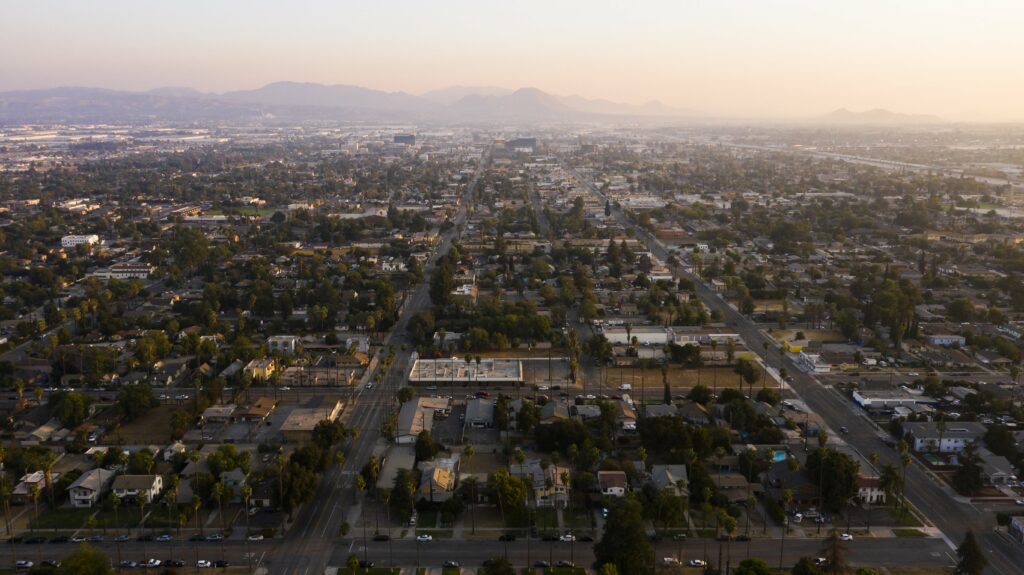For many years, movement organizations have built with little resources or attention from organized philanthropy. As this changes, it is critical not to lose sight of the organizations that have done the patient, deep work of relationships, research and responsiveness in the Inland Region. Organizers also cautioned the dangers of inadvertently supporting tables or structures that only further corporate power and influence in the Inland Region, or set regional agendas without giving real voice to those most affected.
Showing Up with Long-Term, In-Depth Support
Fortunately, as movements have innovated and built new relationships, so too are some funders giving examples of how to nurture lasting change. Weingart Foundation has made a much more concerted effort to expand from its traditional focus on Los Angeles to the Inland Region, and in patient collaboration with organizations, radically simplified its grants process while deepening its commitment to long-term funding. The James Irvine Foundation has also put a massive $2.7 million dollar, multi-year investment in Just SB, a more inclusive and expansive vision for local development counter to the corporate-dominated regional development spaces. TCE’s 10-year investment in Coachella Valley also set an example of what it means to engage, learn and grow alongside community while putting forward unrestricted multi-year funding.
Importance of the Inland Region to National Funders
An understanding of the now more visible movement organizing, as well as the possibility of making global and national impact on issues like logistics/goods movements (i.e. Amazon’s massive power), climate change, housing, and racial justice via community governance has attracted even more funders to the Inland Region. But as often found in such cases of rapid interest by philanthropy, the tendency for foundations to swoop down with little knowledge or relationships often upends relationships, redirects energy from long-term efforts, or other disruptive trends. As one program program officer shared, “People from the outside don’t know where to invest.” To address this, funders can partner with local funders, or collaborative pooled funds to learn about the region and make investments aligned with community-driven priorities.
Jumping into the Inland Region’s Pooled Funds
To better support deep and lasting change, organizers and more active and rooted foundations in the region urge philanthropy to turn to several new pooled mechanisms that offer outside funders, including national ones, a means to support in more inclusive ways. The Inland Empire Funders Alliance is one local mechanism in Southern California. The Fund for Inclusive California (F4ICA) which has dedicated much engagement and resources to the region, is also an important progressive funding mechanism. F4ICA has also chosen to focus on the systematic issues that shape the region’s housing and development crisis, and do so in a way that will “provide long-term, unrestricted, and flexible grantmaking commitments that invest in the leadership and vision of the communities most affected by housing injustice.”
F4ICA is a key partner also of NFG’s Amplify Fund, which likewise turns to deep, community-led philanthropy to support the work of Black, Indigenous, people of color and low-income communities to build power and shape the decisions made about the places they live. Importantly, Amplify Fund integrates these values through its local grantmaking strategy, internal operations, administrative functions, and behavioral norms.
Organizations and funders alike have also urged groups to follow suit with some of the above-named foundations to invest in unrestricted, core support that lasts longer than one year (or one project.) Cyclical election funding is poured to shift state or national power, but imbalances budgets and leaves groups in the lurch in the off-years. Given how much the long-term, off-cycle work has reshaped the electoral map in the Inland Region, it is vital to actually turn to support for the movement infrastructure itself.
The need for long-term leadership development funding was also raised by many movement and philanthropy interviewees and participants at the FJE/Amplify Inland Region Learning Visit. As one organizer shared, it is vital now to “support youth organizers at a rate that’s sustainable for their work and honors their organizing efforts and power as much as that of adults.” While many program officers feel that they do not know where to begin in what feels like such a big region with multi-faceted challenges, movement leaders point to the need to also fund regional strategies and regional networks for organizing.
Investing in Infrastructure
In such a critical juncture, philanthropic investment has the power to not just support movements, but also help advance the kind of infrastructural and public solutions grassroots groups are fighting to realize. As one leader shared, “It takes between 7 and 9 years for a project to be implemented through local government - if we think in terms of community health and sustainability, we cannot afford to wait that amount of time. Government driven approaches are not the answer entirely to resolve these issues. Encouraging investment from private donors, corporations, foundations can help deploy resources swiftly.” This can include investing directly in affordable housing efforts, with groups like Pueblo Unido CDC starting a project that is geared toward private donors, as well as Time for Change Foundations’ community-controlled emergency, supportive and permanent housing for formerly incarcerated people.
Funders, in other words, have a key role in actually helping move the regional and local development conversations and action to center community-based solutions; they can wield their clout and capital to bring local groups to the table and to help support real grassroots-shaped infrastructure in a region in serious need of housing, water, and other key systems. One program officer shared: “Funders play a key role whether it's prioritizing pots of money for historically excluded and disenfranchised communities, allowing nonprofits to continue institutionalizing transformational change in their service areas, or breaking down barriers so that smaller grassroot, community-based organizations get their footing. In many circumstances these organizations are addressing issues that have been neglected by many, but are as important to be overcome”. Funders can help champion these innovative and absolutely necessary solutions.
It is clear in the Inland Region there is no shortage of innovative visions for inclusive economies and neighborhoods, transformational collaborations, and strategic action to make the region work for all its residents, including honoring indigenous communities. Philanthropy has numerous opportunities to participate in this effort in ways that will make an impact on global issues like goods movements, climate change, prisons, and housing - with success assured if they, learning from movements, build with respect, deep relationships and responsiveness to those most affected and who are already working in coalition for change.

